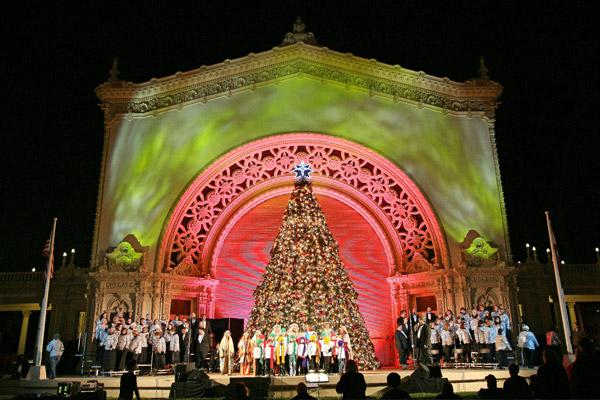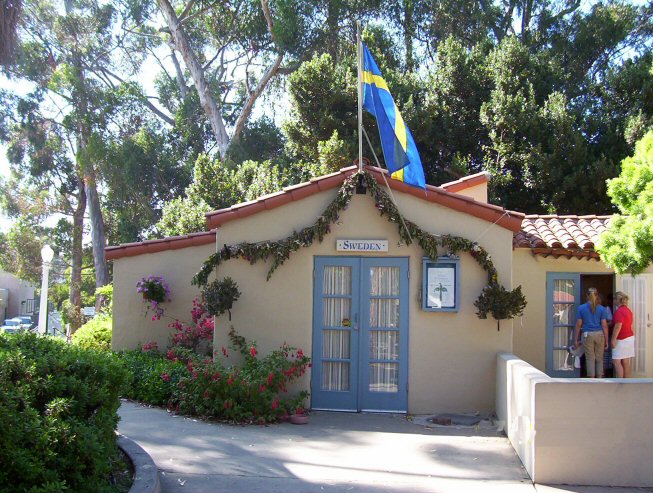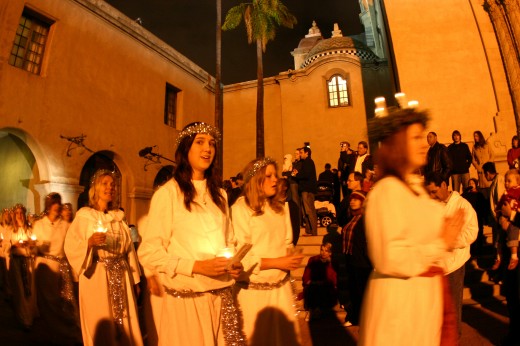As we noted earlier, this month the Collaborative Services’ blog is exploring how different cultures around the world celebrate the holidays. But we figured we’d start at home because San Diego has a very special festival that kicks off the holiday season with arms wide open.
December Nights in Balboa Park is a weekend celebration of the holidays as well as the city’s many cultures. This year’s event takes place on December 7 and 8. Its popularity has mushroomed. More than 300,000 people will attend this weekend’s event, making it the largest community festival of any kind held in San Diego.
What’s the appeal?
Well, for one thing: Diversity. From the Santa Lucia Procession – a Swedish tradition to the Colegio Ingles Choir performing “The Story of the Poinsettia” – a Mexican Christmas legend – there is much to experience.
Balboa Park is also home to the House of Pacific Relations International Cottages – representing more than 30 nations – which also take part in the celebration. A whole world of food, dance, and music is present in its International Cottage Christmas Festival, which is a part of the December Nights celebration.
The event, which began in 1978, has become an integral part of San Diego’s fabric. Today, we hear from Debbie Petruzzelli, the Public Relations Manager for Balboa Park, who provides insight on the evolution of the iconic celebration and its importance.
– – –
December Nights has become a wonderful San Diego tradition, giving a variety of cultures the chance to share how they celebrate the holidays. How has the event evolved over the years?
December Nights (originally Christmas on the Prado) was a vision of the Balboa Park museums in 1978. A small group of the museums on “the Prado” wanted a reason to get people to come down to the Park at night to see the holiday decorations. Also the museum stores were hoping for a “shopping event” to boost sales.
Over the years, the event added outdoor entertainment, free museum admission, and expanded the boundaries of the event past El Prado into the rest of the Park. As these features were added, the attendance grew exponentially. What was originally a small, grass-roots event hosted by the cultural organizations had grown into a huge event that required police staffing, traffic control and other expenses.
In 2002, the name of the event was changed to Balboa Park December Nights to more accurately represent the fact that the event had moved far beyond “the Prado” and the increasing multi-cultural aspect.
In 2003, the event was in danger of being cancelled. The Balboa Park museums simply did not have the infrastructure to manage the growing attendance. And cost-recoveries fees for police, traffic control, and insurance were more than the small budget could bear. It was at this point that the City of San Diego took over management and co-hosting of the event. Attendance now is estimated at more than 300,000 over the two days.
How many different cultures are represented in the December Nights celebration?
There are more than 30 nations represented at the International Cottages, including Houses of Israel, Mexico, Colombia, Palestine, Turkey, Iran, India and China. In addition, SWEA (Swedish Women Education Association) perform the traditional Santa Lucia Procession and Swedish food festival in the California Quadrangle adjacent to the Museum of Man. They have been involved with the event for 31 years.
There are also many other cultural performances throughout the Park – from Flamenco dance on the Organ Pavilion Stage and Serbian and Balkan dance troupes on the Palisades Stage – to a choral group from Tijuana and Japanese Anime “Mochi Maids” performance.
Are more being added as the San Diego region sees new immigration trends, such as the growth in the Asian-American community?
As the organizing and entertainment committees accept applications for entertainment they are committed to including as many cultures as possible. This is reflected in the variety of entertainment. Among some of the cultural performances added in recent years are a group of Estonian dancers who perform the traditional folkorati dance, a children’s choir from Tijuana, Mexico, the Jewish Men’s choir, and Mochi Cafe an organization that creates awareness and appreciation for modern Japanese culture through performances and cultural events.
Why do you think it is important showcase these different kinds of holiday celebrations?
San Diego has such a fantastic amalgamation of different cultures! Where else in San Diego can people take in such an array of cultural variations?
In my 16 years working this event I’m always astounded at the new things I learn each year. It is easy to become insulated in our comfort zone. How wonderful that there is such a place and such an event where the joyousness of these holiday celebrations can be shared.
The U.S. is routinely referred to a melting pot. And it’s not unusual for second and third generation immigrants to lose grasp of some of the traditions of their nations of origin. Many people who take part in December Nights have been able to hold onto these traditions. How do they do it?
When you visit December Nights one of the most telling and obvious things you’ll see is the joy and passion people have for their culture and nations… and how thrilled they are to be able to share it with so many people. Some of the cultural groups, like the Houses of Ireland and Scotland, have been continuing these traditions since 1935. Other more recent Houses, like Colombia and Mexico – Palestine and India – are also continuing those traditions for their young people, and for the people of San Diego.

Traditional Folklorico dance performed at the House of Mexico in Balboa Park
(Credit: Diego on a Dime)
Do you have a favorite cultural holiday celebration besides your own? If so, which one and why?
I’m not Italian by birth, so it’s hard not to love the food and traditions of my adopted culture! What’s not to love about “La Befana” (the Christmas witch) and spaghetti and meatballs on Christmas Day? That said, our neighborhood is heavily influenced by the Vietnamese migrants beginning in the 1980s. Chinese New Year, Dragon Dances, firecrackers and red “good luck” envelopes have been something our family has loved for many years.
OK. Big question: Which cultural holiday celebration has the best food?
The Feast of the Seven Fishes from Italian culture is pretty hard to beat. Otherwise, I’m working my way through the holiday food at the International Cottages. I’m still not done after 16 years. Favorites so far? Lumpia from Philippines; tamales from Mexico; paella from Spain (like the Feast of the Seven Fishes in a bowl); and falafel from Israel.
– – –
Thanks Ms. Petruzelli for taking the time during the busy holiday season to tell us about December Nights, a joyous gift for all San Diegans and our city’s many holiday visitors.
Mike Stetz, Senior Writer
Collaborative Services, Inc.





Recent Comments